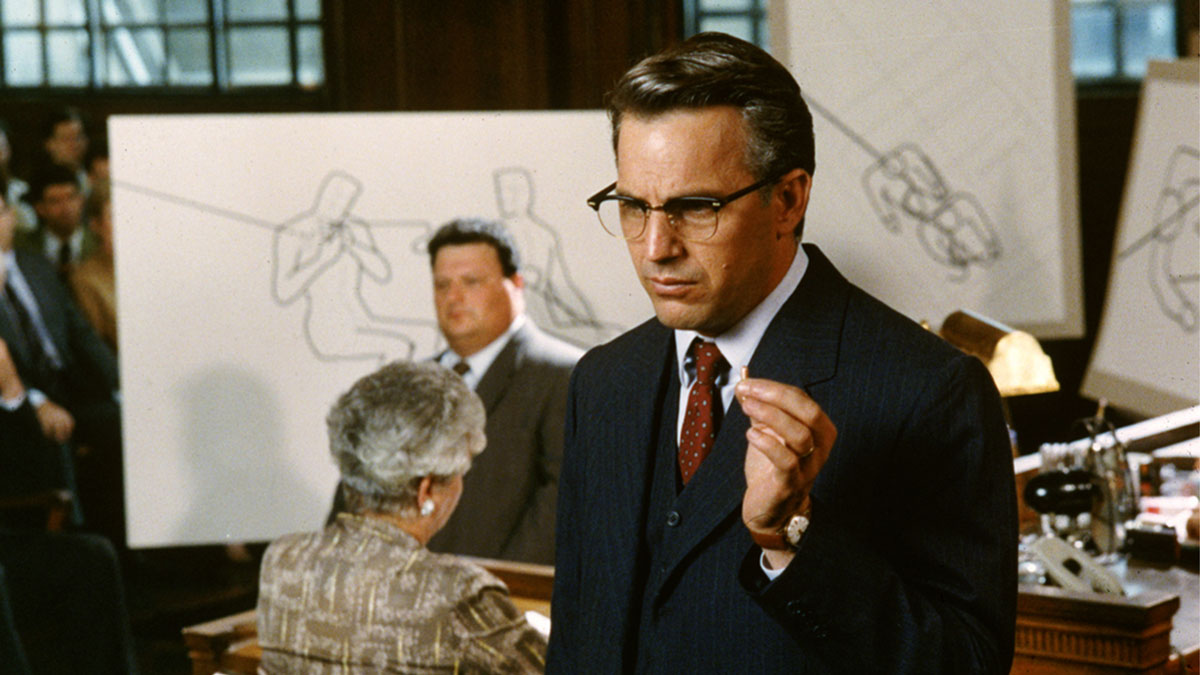
(C)2016 Twentieth Century Fox Home Entertainment LLC. All Rights Reserved.
``JFK'' orchestrated bashing, Oliver Stone's challenge to Kennedy assassination Part 1
2021.01.01
“JFK” synopsis
November 22, 1963. The 35th president, John F. Kennedy, was assassinated in Dallas, Texas, shocking the nation. Less than two hours The Day After, it was announced that Oswald had been the sole perpetrator of the assassination, but Oswald was shot to death while being escorted. New Orleans District Attorney Jim Garrison, who has doubts about the Warren Commission's findings, launches his own investigation to uncover the truth. But mystery begets mystery. Jim Garrison takes on deep, heavy, and formidable puzzles. It was the beginning of a long battle with the United States, and the beginning of a rift with his beloved family.
Nearly 60 years ago, the assassination of President Kennedy shocked the world. The movie about this event that shook history was directed by Oliver Stone, who is said to be at the forefront of Hollywood social films. However, even with Platoon Stone, who has delved into the dark side of America in films such as ``Platoon'' (1986) and ``Born on the Fourth of July '' (1989), there were great difficulties in turning this incident into a movie. It was decided that this would be accompanied by
This article examines the difficult journey that Oliver Stone went through in order to complete the film "JFK" (1991) from various angles. The approximately 25,000-word article will be published in three parts: the first part, the second part, and the second part.
What was Oliver Stone's assassination attempt on Kennedy? I would like to explore this in this article.
“JFK” preview
Index
- November 22, 1963, Dallas, Texas
- The road to making the Kennedy assassination into a movie
- How to pitch a controversial film to a movie company?
- Make “JFK” an all-star movie!
- The reason why the assassination scene was perfectly recreated
- Obtaining filming permission was extremely difficult
November 22, 1963, Dallas, Texas
Four U.S. presidents were killed by bullets. Opinions may differ as to whether this is considered a large number or a small number, but unlike presidents such as Abraham Lincoln who were shot from close range, this is the only president to date who was shot from a long distance with a rifle. -John F. Kennedy, the 35th president.
On November 22, 1963, Kennedy traveled to Dallas, Texas to campaign for the next year's presidential election, and at 11:50 a.m. that same day, he boarded the presidential car that was flown from Washington to Dallas Love Field Airport. is. Next to Kennedy was his wife, Jacqueline Kennedy, and in the front row seats were the governor and his wife of Texas. The top roof of the limousine was removed as it was a parade vehicle, but a bulletproof cover could be fitted. However, since it was a sunny day, Kennedy headed into the city, leaving his upper body exposed to the public.
The car, moving slowly at around 16km/h, turned right in front of Dealey Plaza from Main Street, went straight for a while, and then turned left in front of the Textbook Depository Building. At 12:30 p.m., as I was traveling along a road with smooth S-curves, I heard a dry sound that seemed to cut through the air. Someone thought their tire was flat. Some thought it was the sound of crackers.
Jacqueline, who was seated next to him, and the governor, who was seated in the front seat, looked worriedly into Kennedy's face as he bent forward, clutching his throat.The next moment, a second bullet pierced Kennedy's head, causing his body to arch backwards. At the same time, blood spray erupted in front of me. Those who saw it finally understood the situation and realized what had happened. What was left behind when the presidential car sped away from Dealey Plaza was chaos and fear.
Vice President Lyndon B. Johnson was sworn in as the 36th president at 2:38 p.m. This was about two hours after Kennedy was shot.

